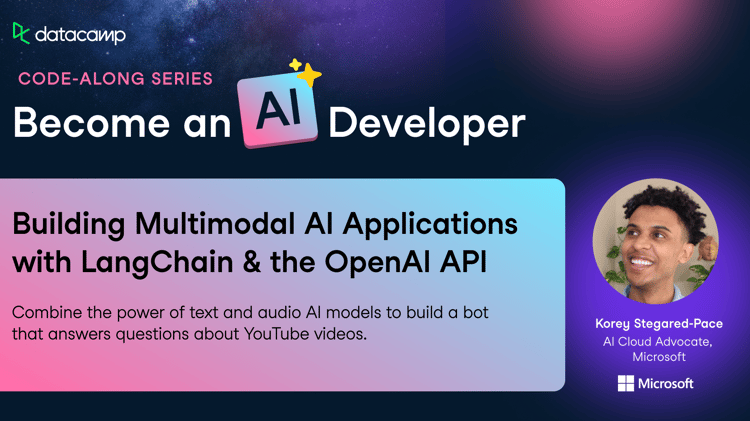LaMDA stands for "Language Model for Dialogue Applications" and represents Google’s family of conversational large language models. In the rapidly evolving world of artificial intelligence, LaMDA is a significant leap forward, aiming to make interactions with technology more natural and intuitive.
LaMDA Explained
LaMDA was introduced as a successor to Google's Meena in 2020. The first-generation LaMDA was announced during the 2021 Google I/O keynote, with its second generation being unveiled the following year. This model was designed to engage in open-ended conversations, making it unique in the realm of conversational AI.
The underlying technology of LaMDA is the Transformer architecture, a neural network model that Google Research invented and open-sourced in 2017. This architecture allows the model to read and understand the relationship between words in a sentence or paragraph and predict subsequent words. Unlike many other language models, LaMDA was specifically trained on dialogues, enabling it to grasp the nuances of open-ended conversations. This training ensures that LaMDA's responses are not only sensible but also specific to the context of the conversation.
LaMDA's training process is extensive and intricate. It was trained using a vast dataset consisting of documents, dialogs, and utterances numbering in the billions, which in total comprised 1.56 trillion words. This massive dataset allowed LaMDA to learn and understand a wide range of conversational nuances.
In addition, human raters played a pivotal role in refining LaMDA's capabilities. These raters evaluated the model's responses, providing feedback that helped LaMDA improve its accuracy and relevance. To ensure the factual accuracy of its answers, these human raters utilized search engines, verifying the information and ranking responses based on their helpfulness, correctness, and factual accuracy.
Ultimately LaMDA's power lies in its ability to generate freeform conversations unconstrained by task-based parameters. It understands concepts like multimodal user intent, reinforcement learning, and can seamlessly transition between unrelated topics.
Ethical Considerations of LaMDA
With the rise of large language models like LaMDA, ethical considerations have become paramount. In June 2022, claims arose that LaMDA had achieved sentience, leading to widespread debate and skepticism within the scientific community. While these claims were largely dismissed, they sparked discussions about the efficacy of the Turing test and the potential implications of advanced AI.
To address potential ethical issues, it's crucial to establish clear guidelines and principles for AI development and deployment. Transparency, fairness, and accountability should be at the forefront, ensuring that AI models like LaMDA are used responsibly and do not inadvertently perpetuate biases or misinformation.
Alternatives to LaMDA
While LaMDA is a significant advancement in conversational AI, it's not the only player in the field. OpenAI's ChatGPT has gained immense popularity, known for its ability to generate human-like text based on the prompts it receives. Another notable alternative is Anthropic’s Claude, which also aims to push the boundaries of conversational AI.
LaMDA vs PaLM 2
It's widely known that Google was the pioneer in the field of Generative AI. However, the company failed to successfully implement these technologies into consumer-facing products. When OpenAI introduced ChatGPT, Google was caught off guard by the explosive growth and adaptability of conversational. As a response, Google launched Bard, which received mixed feedback from users.
Initially, Bard was powered by the LaMDA family of language models, but it performed poorly compared to GPT-3.5. Therefore, Google has now switched to the more advanced PaLM 2 for all its AI products, including Bard.
The name "PaLM" refers to Pathways Language Model, which utilizes Google's Pathways AI framework to teach machine learning models how to carry out various tasks. Unlike its predecessor, the LaMDA model, PaLM 2 has been trained in more than 100 languages and boasts improved expertise in coding, enhanced logical reasoning, and mathematical abilities.
PaLM 2 has been trained on collections of scientific papers and web pages that contain mathematical content. As a result, it has developed a high level of expertise in logical reasoning and mathematical calculations.
Although Google is promoting PaLM 2 as a more advanced model, it is still quite distant from the GPT-4 model. However, it is superior to LaMDA, which is a positive development. Thanks to PaLM 2, Google is heading in the right direction to surpass its competitors in AI.
Want to learn more about AI and machine learning? Check out the following resources:
- Unsupervised learning in Python course
- Large Language Models concepts course
- How to use ChatGPT Code Interpreter
- What is machine learning?
LaMDA vs. PaLM 2: Key Differences
| Feature | LaMDA | PaLM 2 |
|---|---|---|
| Release Year | 2021 | 2023 |
| Primary Focus | Open-ended conversational AI | Multimodal tasks, including coding, logical reasoning |
| Architecture | Transformer-based | Pathways-based |
| Languages Supported | Primarily English | Over 100 languages |
| Applications | Dialog-based systems, virtual assistants | Bard, task-based systems, multilingual chatbots |
| Strengths | Contextual conversations, human-like dialogue | Multilingual, coding, and logical reasoning capabilities |
| Weaknesses | Limited outside of conversation | Still behind GPT-4 in some complex tasks |
| Ethical Concerns | Sentience claims, potential biases | Bias mitigation, enhanced explainability |
Recent Developments in Google's Conversational AI: LaMDA and PaLM 2
Since originally writing this article, the AI landscape has changed quite a bit, and Google has made significant strides in both LaMDA and PaLM 2 in recent months.
LaMDA in niche applications
Although Google has transitioned to PaLM 2 for many mainstream applications, LaMDA continues to serve as a foundational technology in niche areas. Its training on open-ended dialogues makes it ideal for applications that require deeper conversational engagement without the need for complex reasoning. This includes certain customer support tools, virtual assistants, and dialog-based research platforms where free-form conversation is prioritized over task-specific accuracy.
Ethics and transparency in AI
Ethical concerns surrounding conversational AI have grown in recent years, particularly after the claims in 2022 that LaMDA had achieved sentience, sparking widespread debate. Google has responded by doubling down on ethical AI initiatives, ensuring that its models, including PaLM 2, are designed with transparency, fairness, and bias mitigation at the core. These efforts include more rigorous human oversight, enhanced AI explainability, and new tools to detect and correct biases in large language models. These are particularly relevant since the EU AI Act was introduced.
Competition in conversational AI
While Google’s PaLM 2 represents a major leap forward, competition remains fierce. OpenAI’s GPT-4 continues to dominate the market with its broader general-purpose capabilities, while Anthropic's Claude is gaining ground with its focus on safety and explainability in AI. Google is expected to keep innovating in this space, especially as more companies experiment with multimodal AI and cross-functional systems that can handle a variety of tasks beyond conversational AI.
Let's take a quick look at how some of these models compare:
| Model | Developer | Primary Focus | Notable Features | Weaknesses |
|---|---|---|---|---|
| LaMDA | Open-ended conversational AI | Contextual understanding, free-form dialogue | Narrow focus on conversation | |
| PaLM 2 | Multimodal tasks, multilingual chatbots | Coding, logic, multilingual support | Less advanced than GPT-4 | |
| ChatGPT (GPT-4) | OpenAI | General-purpose AI | Highly versatile, reasoning, code generation | Ethical concerns, cost of training |
| Claude | Anthropic | Safe and explainable AI | Prioritizes ethical guidelines, explainability | Less feature-rich than GPT-4 |
Final Thoughts
As Google transitions from LaMDA to the more advanced PaLM 2, it's clear that the landscape of conversational AI is evolving. While LaMDA pushed the boundaries of what was possible with open-ended dialogue, PaLM 2 brings a new level of sophistication with its ability to handle complex tasks, support multiple languages, and engage in more logical reasoning.
However, the conversation doesn't stop here. With competitors like OpenAI’s GPT-4o and Anthropic’s Claude 3.5 Sonnet pushing the envelope, the race to build the most versatile and ethically responsible AI is far from over. The ongoing developments in AI ethics, bias mitigation, and multimodal capabilities will shape how these technologies integrate into our daily lives—both in the workplace and beyond.
As we look ahead, one thing is certain: conversational AI will continue to redefine human-technology interaction. Whether through improved customer service, enhanced virtual assistants, or more intuitive business tools, the potential is vast.
Want to stay ahead of these AI trends? Explore our AI Fundamentals skill track and start building the skills that will keep you at the forefront of innovation.
FAQs
What does LaMDA stand for?
LaMDA stands for "Language Model for Dialogue Applications."
When was LaMDA introduced?
The first-generation LaMDA was announced during the 2021 Google I/O keynote.
What’s the difference between LaMDA and Bard?
Bard is Google’s public-facing AI chatbot, while LaMDA was essentially the ‘brains’ or back-end of Bard. Google has since upgraded Bard so it is powered by its next-generation language model named PaLM 2.
What is the technology behind LaMDA?
LaMDA is built on the Transformer architecture, a neural network model developed by Google Research.
How does LaMDA differ from other language models?
Unlike many other models, LaMDA was specifically trained on dialogues, allowing it to engage in open-ended conversations.

As a certified data scientist, I am passionate about leveraging cutting-edge technology to create innovative machine learning applications. With a strong background in speech recognition, data analysis and reporting, MLOps, conversational AI, and NLP, I have honed my skills in developing intelligent systems that can make a real impact. In addition to my technical expertise, I am also a skilled communicator with a talent for distilling complex concepts into clear and concise language. As a result, I have become a sought-after blogger on data science, sharing my insights and experiences with a growing community of fellow data professionals. Currently, I am focusing on content creation and editing, working with large language models to develop powerful and engaging content that can help businesses and individuals alike make the most of their data.



